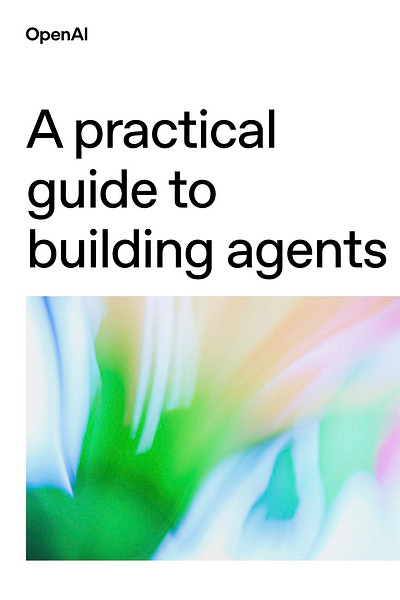OpenAI's Guide Reveals Why Your AI Agents Might Be Security Time Bombs
What Most Companies Get Wrong About AI Automation and How to Fix It Fast
Hey Adopter,
I've spent some time deep-diving into OpenAI's new agent-building playbook so you don't have to wade through the 30+ pages of technical jargon. The document reads like a standard technical guide, but between the lines sits a brutal truth: most companies are building AI agents completely backward.
The Corporate Delusion About AI Agents
Nearly every executive I talk to believes AI agents are magical beings that will somehow fix their broken business processes without changing anything fundamental. They gather requirements, slap some AI on top of legacy systems, and wonder why the results feel underwhelming.
The truth? Agents aren't fairy dust for broken workflows. They're systems that independently accomplish tasks on your behalf with tools, instructions, and decision-making capabilities. But here's where most get it wrong: agents excel precisely at workflows where your current approaches are failing.
Download the guide right here 👇
Three Signs You Need Agents, Not Another Dashboard
Your company probably doesn't need agents if your current automation works well. But consider building them when you face:
Complex decision-making obstacles: When workflows keep stalling because humans need to make nuanced judgments based on fuzzy information. Think refund approvals where "it depends" is the standard answer.
Rule management nightmares: When your rule system has so many exceptions and edge cases that nobody dares to update it anymore. If your security review process requires a 50-page manual, that's your sign.
Unstructured data overload: When your team drowns in emails, documents, and messages, extracting meaning manually. Insurance claims processing is a classic example where humans spend hours reading forms.
If none of these sound familiar, save your money. Traditional automation will serve you better.
The Foundation Trap Everyone Falls Into
Most companies start agent projects with the wrong foundation, focusing on complex architecture instead of core components. An agent needs just three things to work:
Models: The brain that powers decision-making
Tools: The arms and legs that take action
Instructions: The playbook for how to operate
That's it. But corporate instinct inevitably pushes teams toward unnecessary complexity too early. The result? Six months of meetings about "agent ecosystems" with nothing to show for it.
Build One Agent First, Not an Army
The painful truth most vendors won't tell you: start with a single agent handling one workflow. Companies racing to build multi-agent systems end up with impressive diagrams and zero results.
Only consider multiple agents when:
Your prompts contain so many conditional statements they're unmanageable
You have more than 10-15 overlapping tools causing confusion
A single agent consistently makes the wrong decisions
Until then, a single agent with well-defined tools will outperform your fancy multi-agent architecture every time.
Why Agents Need Protection "From Themselves"
Think of AI agents as powerful new employees with access to your systems – but without the human judgment that prevents mistakes. Your security team should be concerned because these agents need guardrails to function safely. OpenAI recommends multiple layers of protection: systems that keep agents focused only on relevant tasks, shields against malicious inputs, filters that prevent personal data from being exposed, safety controls based on how risky each tool is, and automatic escalation to humans when needed. Most businesses rush to implement what agents can do without properly establishing what they shouldn't do. The result? Months later, these same companies discover agents accessing inappropriate data, making costly mistakes, or creating compliance nightmares that could have been prevented with proper safeguards from the start. Protection isn't an afterthought – it's the foundation of any successful agent deployment.
The Risk of Skipping Security Layers
The newsletter points out that companies often focus on agent capabilities (what it can do) rather than controls (what it shouldn't do). This creates significant business risks:
Data leakage: Agents might inadvertently expose sensitive information
System misuse: Agents might access systems or perform actions outside their intended scope
Reliability problems: Without proper guardrails, agents are more likely to make mistakes or be manipulated
Compliance violations: Inadequate controls can lead to regulatory issues, especially with data privacy laws
When these problems inevitably surface months later, they're much harder to fix after the agent is integrated into business processes, potentially requiring complete redesigns.
Would you like me to explain any of these protection mechanisms in more technical detail?
Start Tomorrow, Not Next Quarter
If you're planning a six-month roadmap before your first agent sees the light of day, you're already failing. The companies getting real value are:
Identifying one specific workflow that's resistant to traditional automation
Building a single agent with basic tools and clear instructions
Testing with real users and refining based on failures
Adding guardrails as they discover vulnerabilities
Expanding capabilities incrementally
The rest is commentary. Agents aren't a strategy; they're a tool that either works or doesn't.
Adapt & Create,
Kamil








